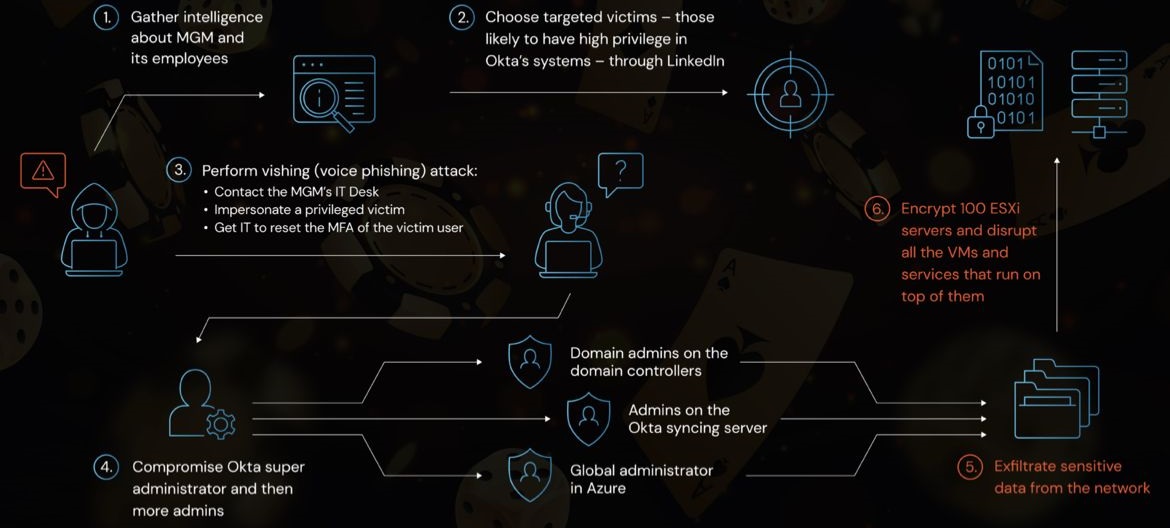
1. F5 Networks – Source-Code Theft, Supply-Chain Alarms
What happened
F5 Networks, a major vendor of network/application infrastructure (notably BIG-IP load-balancers, firewalls, application delivery controllers) disclosed a breach in which portions of its proprietary source code and vulnerability data were stolen. The Hacker News+2Reuters+2
The incident reportedly involved a “highly sophisticated nation-state threat actor” and the intrusion may have persisted for more than 12 months. Reuters+1
The U.S. government’s Cybersecurity and Infrastructure Security Agency (CISA) issued an emergency directive to federal civilian agencies to inventory F5 devices, inspect accessibility from the internet, and apply patches/mitigations by a strict deadline. The Hacker News+1
F5 said it found no indication of the attacker tampering with its software supply-chain or actual exploitation of the stolen code in the wild (at least publicly). Reuters+1
Why it matters
F5 products are widely deployed — many large enterprises and U.S. federal agencies rely on BIG-IP and related infrastructure. A compromise at F5 thus has potential “supply-chain” or “cascade” impacts: if attacker knows F5’s code or vulnerabilities, they could craft tailored exploits. The Hacker News
The theft of source-code and internal vulnerability information is more dangerous than a standard breach of customer data: it provides an adversary with a “map” of how the software works, how it can be attacked, possibly zero-day or near-zero-day paths.
The incident raises urgency for organizations to evaluate whether they use F5 gear, whether it’s exposed publicly, whether they’ve applied the latest patches/updates or mitigations.
What to watch
Public disclosure of which specific F5 products are impacted (BIG-IP versions, F5OS, modules like APM, etc.).
Reports of active exploitation targeting F5 devices (especially externally facing management interfaces). The dashboard from Greynoise reportedly saw spike in activity. Reuters
Whether customers will need to rebuild or isolate devices, or move to alternative vendors.
Whether regulatory action or liability will follow if compromised devices lead to downstream breaches.
2. Qantas Airways – 5 Million+ Customer Records Leaked
What happened
The Australian airline Qantas confirmed that its customers’ personal data (approximately 5 million records) was leaked by a hacker group after a ransom deadline passed. The Guardian+1
The stolen data stemmed from a breach in June 2025 (via third-party platform/Salesforce database) covering a broad window (April 2024–September 2025) and included customer email addresses, phone numbers, birth-dates, frequent-flyer numbers — but reportedly not credit-card or passport data. The Guardian+1
The hacker collective called themselves “Scattered Lapsus$ Hunters” (or affiliated) and threatened publication; after no ransom payment, they published the data. The Guardian
Why it matters
Personal data — even without direct financial credentials — is valuable for phishing, impersonation attacks, identity-fraud. Qantas customers are at risk of targeted scams.
The breach underscores risk of third-party / SaaS-platform exposures (Salesforce/CRM). An organisation may use a vendor that’s less hardened or poorly managed and that becomes the weak link.
Reputation risk: airlines hold trust and often frequent-flyer loyalty programmes. Large-scale leaks reduce consumer confidence.
Regulatory/legal risk: depending on jurisdiction (Australia has privacy laws), Qantas may face investigations, fines, class-action suits.
What to watch
Whether Qantas offers credit-monitoring or fraud-protection services to those impacted.
Whether the full scale of the breach is larger than publicly disclosed (e.g., more than 5 million records, other types of data).
Whether other companies using the same vendor/platform are impacted (i.e., ripple effect).
Whether the hacker group uses this leak to launch follow-on attacks (phishing, credential stuffing) against affected individuals.
3. Netcore Cloud Pvt. Ltd. – Massive Unencrypted Database, 40 Billion Records
What happened
A Mumbai-based marketing firm, Netcore Cloud, reportedly left a 13 TB unencrypted database exposed and publicly accessible, containing around 40 billion records. Windows Central
The records reportedly included email addresses, message subject lines, partial banking and healthcare account information, and documents labelled “confidential”. Windows Central
It remains unclear whether the mis-exposure was due to internal mis-configuration, vendor error, or third-party oversight. The database has been restricted following the discovery. Windows Central
Why it matters
Scale: 40 billion records is huge (far larger than most headline breaches), though many may be less “sensitive” — but exposure of email, partial financial/health data is still significant.
The mis-exposure of a massive marketing/CRM data repository illustrates the risks in non-regulatory-first sectors (marketing, advertising) where data flows across many systems and vendors.
Even if not “financial accounts + passwords”, the data can be used by threat actors for targeting/credential stuffing, social engineering, phishing campaigns.
Because the origin/chain of custody is fuzzy, affected individuals may not know if they are impacted — making response and mitigation more difficult.
What to watch
Whether regulators (India’s DPB, EU GDPR if data of EU residents) investigate and impose fines or corrective action.
Whether affected individuals see follow-on scam campaigns referencing the exposed data (email subject lines, messages) — leads to smart phishing.
Whether the company (Netcore) discloses how many unique individuals are impacted, what types of data exactly, and whether they have implemented remediation (encryption, audit, vendor oversight).
Whether this leads to broader attention on security in the marketing/advertising supply-chain.
4. Capita plc – UK Outsourcing Firm Fined £14 M After 2023 Attack
What happened
The UK Information Commissioner’s Office (ICO) fined Capita £14 million for data-protection failures following a cyber-attack in March 2023 that compromised personal data of 6.6 million individuals. The Guardian
Investigation found that although Capita detected the breach within 10 minutes, they took 58 hours to shut down the compromised device; ransomware was deployed, nearly one terabyte of data was extracted. The Guardian
The breach included highly sensitive data: criminal-record information, financial details, and “special category” data (which in UK law includes health or other sensitive classes). The Guardian
Capita’s COO acknowledged that critical weaknesses existed: “unfixed vulnerabilities, understaffing, inadequate testing” – per ICO report. The Guardian
Why it matters
Outsourcing firms act as service providers to other organisations; a breach in such a firm can expose many downstream clients/customers and amplify risk.
The large fine signals increasing regulatory enforcement and the cost of failing to secure sensitive data.
The timeline and lapses (58 hours, unfixed vulnerabilities) demonstrate that detection isn’t enough — containment and control are equally vital.
For organisations using third-party providers (like Capita), this emphasizes the need for vendor-risk management, contractual security requirements, incident notification and response readiness.
What to watch
Whether the fine triggers additional lawsuits or class actions by impacted individuals.
Whether Capita implements and publishes detailed remediation (security governance, patching cadence, staffing, monitoring).
Whether other outsourcing/service firms evaluate their own vendor-risk posture and make changes.
Whether regulatory authorities in other jurisdictions escalate similar fines for comparable breaches (setting a global precedent).
5. China Ministry of State Security vs United States National Security Agency – Accusation of Long-Term Cyber Attacks on China’s Time Centre
What happened
China’s Ministry of State Security publicly accused the U.S. National Security Agency (NSA) of conducting long-term cyber-operations (2022–2024) against its National Time Service Center, a critical institution that provides standard time and supports key infrastructure (communications, finance, power). Reuters+1
According to the accusation, the U.S. used vulnerabilities in a foreign mobile-messaging service to access staff devices in 2022, and subsequently used “42 types of special cyberattack weapons” between 2023-24 directed at the high-precision timing system. Reuters+1
The incident heightens scrutiny of cyber-espionage and infrastructure vulnerabilities — but it remains an allegation from Chinese authorities; the U.S. Embassy declined comment. Reuters
Why it matters
Timing systems (chronometers, GNSS, network time) underpin many sectors: financial markets, power-grids, telecoms, military systems. A compromise here can cascade into broad operational failures.
The case illustrates how cyber-intrusions are not just about data theft but about strategic infrastructure-level compromise, and the blurred line between espionage and disruption.
The public-naming of alleged state actors (and accusations back-and-forth) raises geopolitical risk; organisations may need to consider both safety of their tech stack and broader national-risk exposures.
The targeting of mobile messaging services as a vector shows how consumer apps can become leverage points for major infrastructure attacks.
What to watch
Whether additional technical evidence emerges (independently verified) to support China’s claims (which would raise diplomatic/cyber-policy implications).
Whether there are follow-on disclosures of vulnerabilities in mobile messaging platforms used by the time-centre staff (which may require patching).
Whether organisations that rely on precise timing (financial trading, power-grid, telecom switching) reassess their risk and redundancy of time-services.
Whether this leads to swift policy/regulatory changes around cross-border cyber-operations and infrastructure protection.
6. Verisure – Alarm-Service Provider Data Breach (Sweden)
What happened
Swedish home-and-business-alarm company Verisure (which recently completed a large European IPO) disclosed a data breach affecting its “Alert Alarm” customers in Sweden. Cybernews
The company said it has notified police and authorities, investigation is ongoing, and it will update customers “when further information is available”. Cybernews
The exact volume of customer records impacted, type of data stolen, and method of breach have not been publicly detailed (as of now).
Why it matters
Home-security companies hold sensitive personal information (addresses, alarm installation details, customer contact info) and represent a potentially high-value target for threat actors seeking to enable physical-security risks or get footholds in connected-home/IoT systems.
The fact this incident occurred shortly after an IPO raises concern for investor confidence, regulatory scrutiny, and the importance of cybersecurity in “physical+digital” service firms.
Because details are still scarce, there’s risk of under-notified impact — customers may not know whether their data is compromised, making proactive protection harder.
What to watch
Verisure’s disclosure: how many customers, what data types, what timeframe of exposure.
Whether cross-border regulators (e.g., EU GDPR authorities) investigate and impose corrective action or fines.
Whether customers receive guidance on steps to take (monitoring, changing security credentials, alerting for phishing).
Whether the breach is leveraged by attackers (phishing, social-engineering, impersonation of alarm-company services).
7. Kansas City National Security Campus (under National Nuclear Security Administration) – Breach via Microsoft SharePoint Flaws
What happened
A foreign actor reportedly breached the Kansas City National Security Campus (KCNSC) — a facility that manufactures critical non-nuclear components for U.S. nuclear weapons — via unpatched Microsoft SharePoint vulnerabilities. CSO Online
The facility is managed by Honeywell Federal Manufacturing & Technologies (FM&T) under contract to the NNSA. The attacker used browser-based SharePoint flaws to gain access to internal networks. CSO Online
The breach raises serious concerns because of the sensitive nature of the facility (nuclear weapons production). The full scope of data stolen is not publicly detailed.
Why it matters
This attack targets national-security infrastructure — not just data or commercial systems — highlighting the risk of cyber-intrusions into manufacturing/OT (operational-technology) systems, especially for high-consequence facilities.
Vulnerabilities in widely used enterprise software (SharePoint) remain a critical vector; even organisations in the highest-risk domains may still be exposed by unpatched or mis-configured systems.
The incident may alter how the government and its contractors prioritise cyber protections in manufacturing and supply-chain systems for defense/critical infrastructure.
What to watch
Public disclosures by NNSA/Honeywell about the breach: exactly what was accessed, what was exfiltrated, what mitigation steps are being taken.
Whether additional facilities (other NNSA sites or defense-contractor plants) are found to be similarly impacted.
Whether this triggers new contractor-cybersecurity requirements or assessments for defense-manufacturing supply-chain.
Overall Patterns & Key Insights
- Layers of vulnerability
Across these incidents we see:
Vendor/supply-chain exposure (F5, Netcore, outsourcing firms)
Third-party platform/CRM exposure (Qantas via Salesforce, marketing firm mis-configuration)
Critical infrastructure & defence (time systems, nuclear-components manufacturing)
Physical security/IoT overlap (Verisure alarm provider)
Long dwell-times and state-actor sophistication (F5 breach)
- Motives shifting
While espionage/state-cyber operations remain visible (time-centre, nuclear manufacturing), a large proportion of current attacks are financially motivated: extortion, ransoms, data-theft for resale, credential-harvesting. As noted in a recent report by Microsoft Corporation, 52% of incidents with known motive were driven by financial gain. The Official Microsoft Blog
- Data types and consequences
Even breaches that don’t include credit-card numbers or passwords still pose big risks: e.g., email + phone + birthdates can fuel phishing/social engineering.
Source-code or vulnerability disclosures (F5) are higher-order risk: they enable future exploits, not just exfiltration of data.
High-risk facilities (nuclear, government) are seeing breaches via seemingly “standard” enterprise software (SharePoint), showing that attackers leverage mainstream tools to get to high-value targets.
- Regulatory & reputational cost increasing
Fines like the Capita case (£14 m) show enforcement is real. Organisations must invest in cybersecurity not just as technical cost, but as risk-management for business continuity, reputation, regulatory compliance.
- What organisations should be doing
Inventory and patch critical infrastructure, including vendor-hardware and firmware (e.g., if you use F5 or similar gear, act now).
Audit vendor-risk: ensure third-party platforms, SaaS vendors, contractors meet security standards, are audited, and incident-response ready.
Monitor for threat-actor activity: dwell-time matters, attackers remaining long inside networks is a big part of sophisticated attacks.
Train employees and maintain alerts for phishing/social engineering; many attacks begin with access via human error.
Plan for incident-response: breach will happen, the key is detection, containment, communication, remediation.
Think of cyber-risk as not just data-theft but business-disruption (production shut-downs, physical-security, infrastructure).
Final Thoughts
The past two weeks illustrate a convergence of threats: from massive data exposures (Netcore, Qantas) to high-stakes supply-chain compromises (F5) and strategic infrastructure hacks (time-centre, nuclear manufacturing). The scale, diversity of targets, and sophistication of actors are increasing.
For organisations — whether commercial, governmental or service-provider — the message is clear: cybersecurity cannot be an after-thought. It must be baked into vendor-management, infrastructure design, operations, and incident-response plans. The cost of failure is growing: back-door access, regulatory fines, loss of trust, cascading business disruption.
If you like, I can pull a full list of 10-15 recently disclosed breaches with mini-profiles each (date, company, type of data, mitigation step) that you can use as a tracking dashboard. Would you like that?


